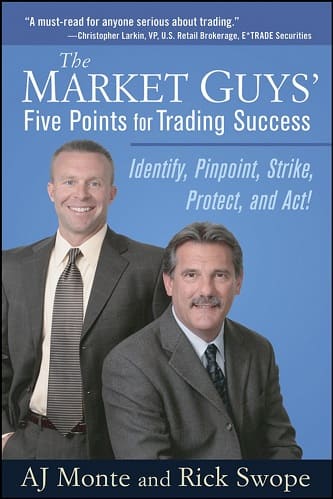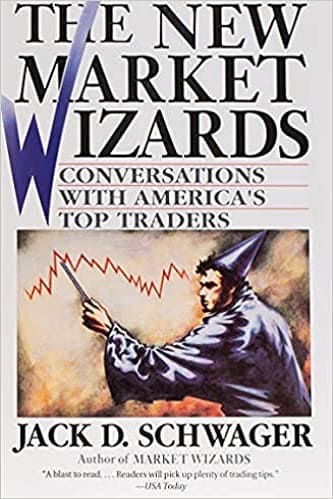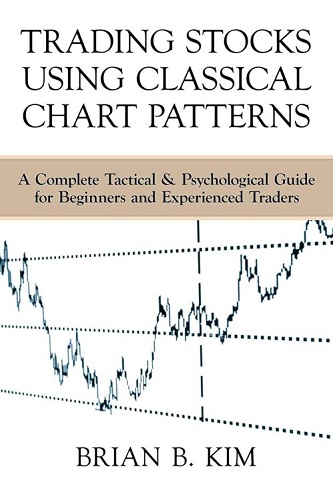Articles
The 10 Habits of Highly Successful Traders By Thomas K. Carr
BACK in the winter of 2003 I held an online seminar for several hundred of our clients, most of whom were relatively new to trading. In two grueling four-hour sessions we covered the basics of chart reading, candlesticks, and trend trading. I also included a full explanation of two never-before-taught trend trading setups that I had been working on the previous year. During the question-and-answer period, however, I was surprised to find that most of the concerns of the audience had little to do with the logistics of trend trading and more to do with the specific details of my trading approach. In order to answer those questions as precisely as possible, I promised my clients that I would write up my trading rules and send them each a copy.
The following list is a replica of that original set of rules I sent my clients. None of the rules have changed since then, though some of their applications have gotten a bit more sophisticated. As always with trading, there are exceptions allowed, as dictated by current market conditions.
1.Follow the Rule of Three
There are many indicators a technical analyst uses to determine whether or not to take a particular trade. There are patterns the price bars make on the chart; there are moving averages of price; there are various momentum and overbought/oversold indicators as well. Together, these form a pictorial description of where a stock’s current price is, relative to its price history. My Rule of Three says that I will not enter any trade unless I can carefully articulate three reasons from among my list of technical indicators for doing so. Three is the minimum, and more is better. So often young traders take a trade for only one reason: a double bottom, for example, or overbought stochastics. These indicators need to be confirmed by others working in tandem. Conflicting indicators signal a confused market. We don’t want that. We want to enter on conviction, not confusion. So always wait until you can satisfy the Rule of Three (at least). Remember, trading is a game of probabilities, and you should always stack the odds in your favor.
2.Keep losses small.
Bernard Baruch, the great Wall Street speculator from the turn of the last century, once said, “Even being right three or four times out of ten should yield a person a fortune if he has the sense to cut his losses quickly.” Baruch was right. It is important to keep losses to a minimum, as most large losses started out as small ones, and large losses can end your trading permanently. Normally, we keep our losses small by setting stop-losses on all open trades. We do this on all trades that we are not monitoring on a minute-by-minute basis; other-wise, we will keep a mental stop in place and exit the position once that price level is violated. Remember Warren Buffett’s Rule #1: “Don’t Lose Money!” Buffett also made a second rule: “Don’t forget Rule #1!” So take a tip from the world’s greatest investor and always strive to keep your losses small.
3.Adjust stops and targets at the end of the day.
At the end of each trading day, on a high-watermark basis, adjust your stop-loss or target price as needed. Here “high water mark” means you adjust either the stop or target only if the closing price sets a new high or low from the point of entry. This is how it works: raise your stop-loss price at each new closing high since entry (or new low if the trade is a short). And if you are using a target price as an exit, lower your target price at each new low if the trade goes against you (or raise at each new high if short). Don’t get complacent with your trades. Monitor them each day at least once near the close, and adjust your stops and targets accordingly. It is also a good idea to take off your stops overnight to avoid the wide fluctuations of after-hours trading. But do keep your target orders in place. I like to break down my target limit order into smaller bits and set them one penny apart. Occasionally, one or more of these get filled overnight in the sort of erratic, widely ranging trading that characterizes the after-hours market.
4.Keep commissions low.
Use a discount broker of your choice that charges a maximum of $10 per trade. There are several online brokers (OLBs) that charge as little as, or even less than, $0.01 per share per trade. You should not be paying more than this. The qualitative differences between an OLB charging $30 per trade and one charging $1 per trade are minimal at best. Both will offer you fast fills, occasional price improvement between the spread, frills like automatically trailing stops, boxing and basket orders, and the ability to trade funds, options, and futures. Why pay a premium for a brand name? Remember, commissions are part of your overhead costs—and when running any business, the lower you can keep your overhead costs, the more profits you get to take to the bank!
5.Amateurs at the open, pros at the close.
What this familiar trading adage means is that, in general, the well-funded institutional traders often fade (or trade against) the morning momentum, happily handing shares to anxious amateurs, before going off to gorge themselves on a high-fat lunch. When they get back to their desks around 2:30 p.m. EST, they fully expect to be able to pick up the same shares at a better price. They are usually right. That’s why they are professionals. They get paid to be right about things like that. So if you must trade in the morning, be sure to ease into your trades in smaller portions. Yes, you might miss out on some nice moves, but in the long run you will save yourself money. Even better: look to enter your trades within the last two hours of trading. In that way you are more likely to be in sync with the larger and more determinative moves caused by professional trading.
Suggested Books and Courses About Trading Psychology
6.Know the general market trend, and trade accordingly.
This is more easily said than done, but it is absolutely essential to successful trend trading. You need to know each day what kind of market you are currently trading in. We will say more about this in Chapter 5. Here the general rule can be stated that the type of market we are in will determine the type of trade you put on. There are five general types of market trends: weak uptrend, strong uptrend, weak downtrend, strong downtrend, and range-bound. In weak uptrends and downtrends, you should focus on continuation plays; in strong uptrends and downtrends, you should focus on breakout plays; and in range-bound markets, you should look for reversal setups.
You should also ask whether the current trend or range-bound condition is relatively new or relatively old. The longer a market persists in its current condition (uptrend, downtrend, or range-bound), the shorter your time frame should be for new positions. For example, if we are in the early weeks of a new bull market, you should feel comfortable setting a higher target on your long positions. But if you are long during an overbought market (an older bull market), you should aim to take quick profits when given. One quick and easy way to determine the kind of market we are in is to apply the 50-day moving average of closing prices to a chart of the S&P 500. Then simply look at the slope. Is its slope upward (weakly or strongly), down-ward (weakly or strongly), or flat (range-bound)? Has it been this way for a while (prolonged), or did it just turn (new)? And so on.
7.Write down every trade.
We keep track of so many other things in life—the checks we write, the groceries we need, the donations to charity we make, our golf scores, the last time we changed the oil in the car—but how many of us write down the details of every trade we make? In reading the Market Wizards books by Jack Schwager (which I highly recommend, by the way), you learn that nearly all of the wizards keep trading journals. I suggest you do the same. Make a spreadsheet that records the date of each trade entry and exit, the symbol of the market traded, the price of your entry and exit, the size of the trade, the profit or loss, a running total of profits/losses, and a comment section where you describe as specifically as possible why you entered and exited the trade. If you are adept at working with spreadsheets, you can even program columns to keep track of your stop-losses, target prices, and position size.
Analyze these trades at the end of each month. Are you consistently losing with one particular setup? Are your breakout plays working better than your reversal plays?Are your stops set too tight? Use this journal to learn about your weaknesses as a trader. Awareness of those weaknesses should soon lead to overcoming them. If you have any trouble setting up your spreadsheet, email me at [email protected], and my staff will be happy to send you the one I use.
8.Never Average Down on a Losing Position.
Let’s say you buy a stock, expecting it to take off like a rocket, and instead it drops like a rock. What do you do? Answer: you do nothing. You stick with your plan. You keep your stop-loss in place, lower your target at the end of the day, and wait patiently. Do not buy more shares at a lower price to make your average cost lower. That is a loser’s game. You already own shares at that price; why buy more? Why throw good money after bad? Just sit on your hands and let the market do what it wants. Now the one exception to this rule is when you are positioning yourself into a trade and on your entry day you take advantage of a small dip in share price. But in this case you must still be favorable toward the chart, far away from your stop price, and price is showing signs of recovering from its slight dip.
9.Never Overtrade.
You know the feeling: you’ve closed out all your overnight trades for a tidy profit and you say to yourself, hey, I’m on a winning streak, let’s take advantage of it. So you put on a few more trades. But these don’t go well, and now you are back to breakeven. You want those morning profits back, so you put on a few more trades, only now you go with the e-minis or a few, deep in-the-money options to leverage your position. These don’t go well either, and you close the day with a loss. Or perhaps you start the day by closing out losing positions, and you overtrade to try to get the money back, only to deepen your losses on the day. This is the obsessive-compulsive disorder known as overtrading. It is a problem familiar to all traders and is rooted in deep-seated feelings of fear and greed.
The best way to overcome this behavior is to set limits on yourself: when you reach a certain profit point during the day, either reduce your position size or just quit. Better yet, when you reach a certain number of trades during the day, just quit. Reward yourself then for your disciplined behavior: go sit by the pool, read a good book, take a bike ride in the woods—just do something nice to reinforce this discipline until it becomes a habit.
10.Give at least 10 percent of all trading earnings to charity.
The children of John D. Rockefeller were taught five basic rules regarding money: (a) work for all you get,(b) give away the first 10 percent, (c) invest the next 10 percent, (d) live on the rest, (e) and account for every penny. The Rockefellers believed that giving away their money was essential to their wealth. And so should you. The secret is that money multiplies fastest when it’s divided. It’s all God’s money, in any case. We are merely temporary stewards of a small portion of God’s abundance. And when this portion is shared freely with those less fortunate, we prime the economic pump of the universe.
I encourage you to establish a legacy that will outlive you. Plant money trees from which others will harvest the fruit. Ultimately, the only purpose for having wealth is to help others less fortunate. Wealth shared is true wealth indeed. The way I see it, God in His grace gave me the undeserved talent to make money by simply sitting in front of a computer and clicking a mouse every now and then. As a result of that gift, we as a family have been able to travel the world, build a large home, and enjoy some of the finer things in life. The least I can do is give a healthy portion of the fruits of that gift back to God’s work in the world.




